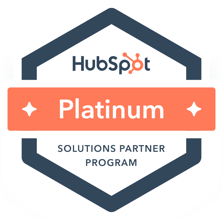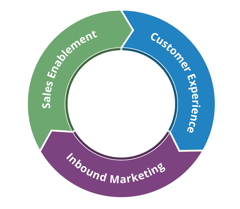For years, companies have been using cookies to track their website visitors, improve the overall user experience, and collect data that helps them better target ads to the right audiences. In addition, cookies have been used to learn what visitors are checking out online even if they aren't on your website. But Google will be phasing out the third-party cookie tracking on Chrome browsers by 2022. According to Statistica, as of June 2021, Chrome made up 65.2% of the web browser market, so marketers need to plan this in the coming months. What does this mean for companies leveraging third-party cookies, and how can you start to prepare for this change?
1) Google is Not Phasing Out First-Party Cookies:
A first-party cookie is stored on your website visitor's computer when they visit your site. This cookie improves the user experience to help with remembering passwords, primary data about the visitor, and other user preferences to customize the web experience. With a first-party cookie, you can learn about what a user did while visiting your website, see how often they visit the website, and gain other basic analytics. This will help you develop a strategy or automate your marketing program around your website's visitors and their habits on your site. The third-party cookie tracks what the visitor did on other sites, but you will still have data on how they interacted with your site.
2) Consider Contextual Advertising:
If you have been relying on third-party cookies for your advertising efforts, it's time to consider some of your prior strategies like contextual advertising. While third-party data allowed you to place your digital ads directly in front of people who matched specific user profiles, contextual advertising will enable you to target ads on websites that rank for similar keywords as your ad. While this is not exactly the same, it is a good starting point in revamping your ads strategy to match the new world of digital advertising without the third-party cookie.
3) Focus on Email Acquisition and Lead Engagement:
The goal of most marketing teams is lead generation, but it will be more critical than ever. You need to attract more visitors to your website, engage with your content, and fill out your forms to start to acquire that first-party cookie information to begin the tracking process. This means focusing on your content more than ever before in this new world without the third-party cookie. You need to think about owning more of your data to leverage the first-party cookie data as much as possible. This will also help you generate new revenue streams with the help of segmented user data. Some ways to consider upgrading your lead generation/email acquisition strategy may include:
- High-value downloadable content offers
- Live and on-demand webinars
- Discount and promo code offers (mainly relevant for B2C marketers)
- High-value email and blog subscriptions
4) Be Transparent with Your Data:
Check your data to see where you are tracking consumer information to ensure all of those data sources are needed and remove those not. Then you need to update your privacy policy and opt-in form on your website to let your prospects know how you will be using that data. The age of transparency is here, and your marketing automation platforms should have streamlined ways for you to implement this type of consent notice.
5) Be Sure to Activate an Exit-Intent Pop-Up:
Like the email acquisition and lead generation recommendations, make sure you have an exit intent pop-up on your website. This will ensure you have one final attempt for someone to opt-in before they leave your website. These excellent lead capture tools give you another way to gather that email address and start the first-party cookie tracking and a marketing automation program. While many people find pop-ups a bit annoying, they work, and it's time to try them for your website if you don't have a pop-up already.
Third-party cookie tracking removal on Chrome is not the end of marketing by any means. In fact, it's an excellent opportunity for marketers to go "back to the basics" of really focusing on lead generation, customer acquisition, the user experience, and high-value content. If anything, it will force marketers to make a more strategic effort to determine the best content and approach to target and convert the right prospects. If you have questions on what this may mean for your business or marketing plan for next year, schedule a strategy session with our team to discuss third-party cookie removal and some tips to overcome these potential hurdles.


__Square.png?width=250&height=250&name=Marketing_Hub_(1)__Square.png)




.png?width=250&name=diamond-badge-color%20(1).png)
